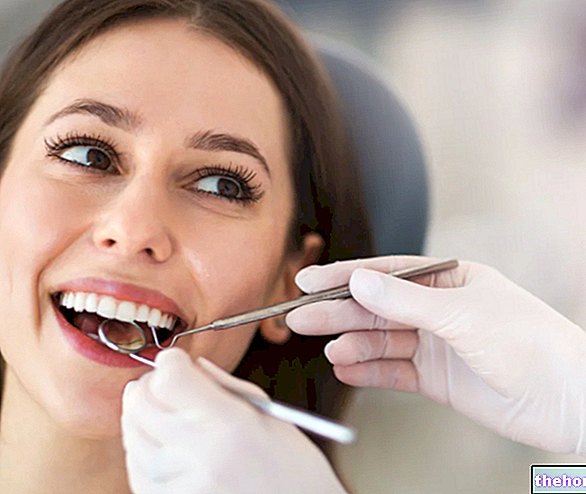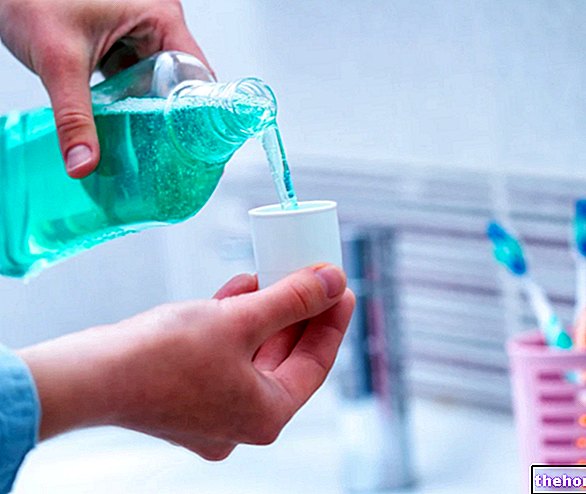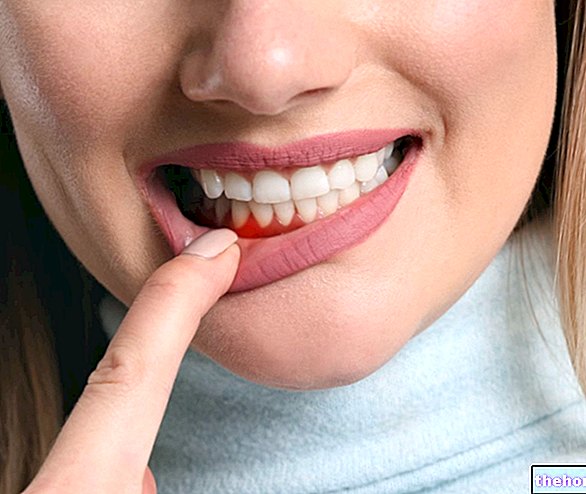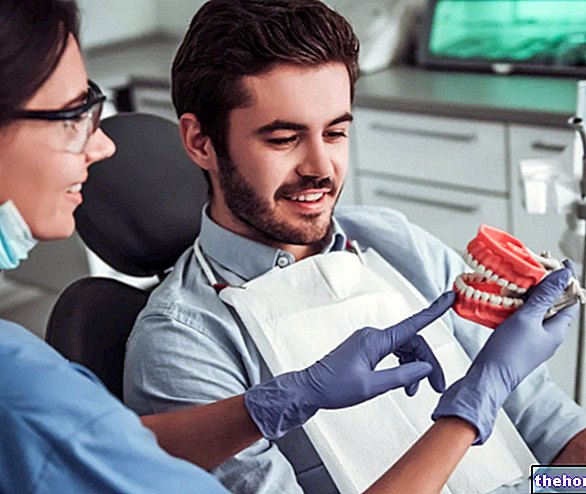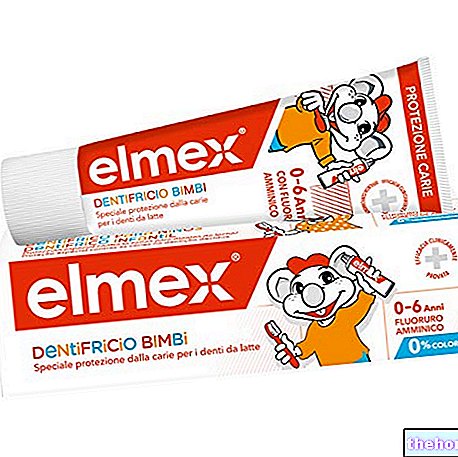Premise
The electric toothbrush made its debut on the market about fifty years ago: today it has fully conquered a prestigious role among the instruments dedicated to home dental hygiene.

Description of the electric toothbrush
Today, there are many types of electric toothbrushes available on the market, which differ in shape, price, head size, type of bristles, operating mechanism, speed and design. Despite the countless varieties of electric toothbrushes, most of them essentially consist of two distinct parts:
- Head of the electric toothbrush, equipped with bristles that rotate, vibrate or oscillate at a certain frequency (different types of mechanics can regulate the movement of the electric toothbrush).
- Body of the electric toothbrush: it contains a motor which, connected to the power supply batteries, transmits the oscillating / rotating movement to the head above.
Most toothbrushes work with a low voltage mechanism (12 V or less). While some models make use of the use of a transformer that powers the instrument through a cable (wall socket), others - the majority - have a rechargeable battery inside the body of the toothbrush.
ELECTRIC TOOTHBRUSH HEAD
Although there are different models of electric toothbrushes, the brushing method remains almost the same. On the market, these electric instruments are available with round or rectangular shaped heads, capable of performing rotational, oscillating, lateral movements at low or high frequency. Generally, the advice of the experts is mainly aimed at toothbrushes equipped with circular rotating heads. Compared to other types of toothbrushes, in fact, the electric ones equipped with round heads ensure oscillatory and rotational movements such as to prove effective not only in removing plaque, but also in preventing gingival bleeding.
ELECTRIC TOOTHBRUSH BODY
The body of the electric toothbrush (the handle) contains the motor and the power supply batteries, which are essential to transmit the oscillatory impulse to the head above. The final price of an electric toothbrush is also (and above all) established based on the type of motor:
- Economic electric toothbrushes: they are equipped with a non-rechargeable battery with an interchangeable head. The head oscillation speed is approximately 4500 oscillations per minute
- More expensive electric toothbrushes: Equipped with rechargeable batteries, this type of electric toothbrush also achieves 9000 oscillations per minute.
A pressure sensor can be placed in the body of the electric toothbrush: this is a specific indicator indicating an "excessive brushing pressure. Other electric toothbrushes have a timer, very useful for signaling the time spent brushing each dental half-arch."
Many electric instruments for dental hygiene are equipped with extra-comfort, therefore with functions that improve the characteristics of the product (eg head holder, toothpaste, etc.).
Learn more: water jet electric toothbrush
The water jet can be compared to a sort of miniature pressure washer. Producing a powerful jet of pressurized water (with frequencies up to 3000 pulsations / minute), the electric water jet brush has been designed to remove trapped plaque and food deposits more effectively. between gum and teeth. This "super-equipped" electric toothbrush is particularly suitable for thoroughly cleaning dental prostheses, fixed dental appliances and dental capsules.
Remove stains from teeth
The electric toothbrush is not a professional dental tool; therefore, it cannot remove any stains from your teeth like professional teeth whitening. In the presence of yellow, dull or stained teeth from coffee, tea, licorice or other foods, it is still advisable to use an electric toothbrush combined with a toothpaste prepared with natural whitening products (such as sage or sodium bicarbonate). As we know, while tooth whitening agents do not completely remove the halos from the teeth, they can still significantly improve the natural color tone of the enamel.
Benefits
Many authors are of the opinion that the correct and impeccable use of the electric toothbrush is more effective in removing plaque and food residues between tooth and tooth than manual toothbrushes. These important tools for oral cleaning, in fact, give the head oscillations and movements. much faster than it is possible to obtain from a classic toothbrush; in doing so, the oscillating bristles remove plaque even in hard-to-reach areas. This is confirmed by a study reported in the prestigious journal in the "International Journal of Dental Hygiene.
The use of an electric toothbrush is also advantageous for all those who complain of difficulties in putting into practice the correct rules of dental hygiene with a manual toothbrush, such as children or the handicapped.
Another advantage of the electric toothbrush is that children seem more stimulated and encouraged in oral hygiene, as they find it fun to brush their teeth and gums with an instrument that oscillates and pulses.
In any case, it is important to underline that electric toothbrushes are not all the same: their effectiveness is strictly linked to the method of use and the type of tool chosen.
Disadvantages
An incorrect or superficial use of the electric toothbrush proves to be ineffective for the purposes of daily oral hygiene. The instruction in the correct use of electric dental cleaning systems is of fundamental importance to eliminate dirt from the teeth in an optimal way; in this regard see our guide: how do you perform proper dental hygiene with an electric toothbrush?
In addition to not allowing a deep cleaning of the teeth, an incorrect use of this electric tool can lay the foundation for gum recessions (retracted gums), gum injuries, caries and other dental pathologies. If not adequately removed with the electric movement of the brushes, the plaque settles on the teeth, making them dull and yellowed.
Just to escape from possible "accidents" in the cleaning of the teeth, it is necessary to put into practice all the fundamental rules for a flawless brushing.
For further information and doubts on the use of an electric toothbrush, it is however advisable to seek the advice of your trusted dentist.
Manual or electric toothbrush?
The qualification of "best toothbrush" still seems to be an open question. The expert opinion is divided into two:
- Many authors believe that the correct use of an electric toothbrush favors the removal of plaque and food residues between the teeth: in fact, the oscillations and movements promoted by the electric toothbrush are not comparable to those obtained by manual brushing.
- Others, who contrast the previous thought, are instead of the opinion that an "impeccable home cleaning of the teeth does not depend so much on the type of toothbrush chosen, but rather on the brushing method, whether electric or manual. In fact, it should not be overlooked that anyone who uses the manual toothbrush with optimal skill, three times a day, and immediately after meals, can undoubtedly obtain an extremely satisfying result, comparable to what could be achieved with a rotating toothbrush.
However, the experts of both categories agree in one thought: the electric toothbrush is much more effective than a manual toothbrush for those patients who have physical limitations or pathological impediments in performing home dental cleaning.
More articles on "Electric toothbrush: description, advantages and disadvantages"
- Electric Toothbrush
- Toothbrush - How to use it
- Toothbrush Choice - Soft and Hard Bristles
- Toothbrush - Head in Silver, Whitener, Antiplate

